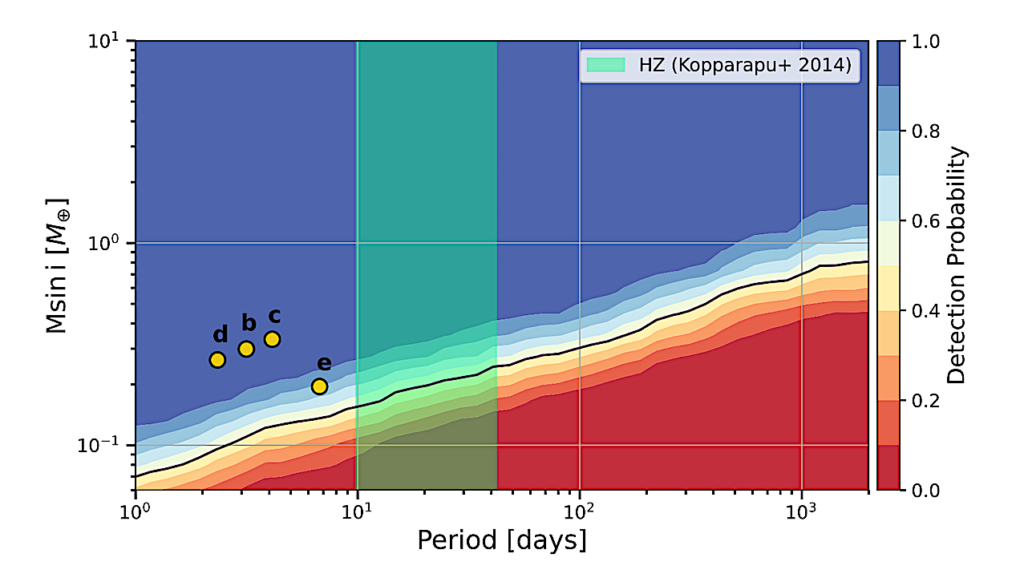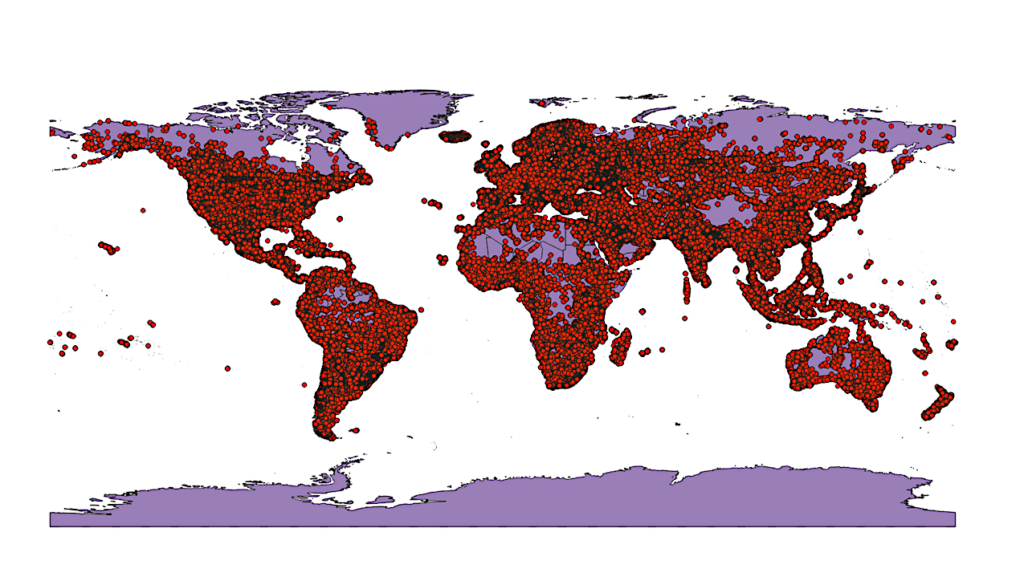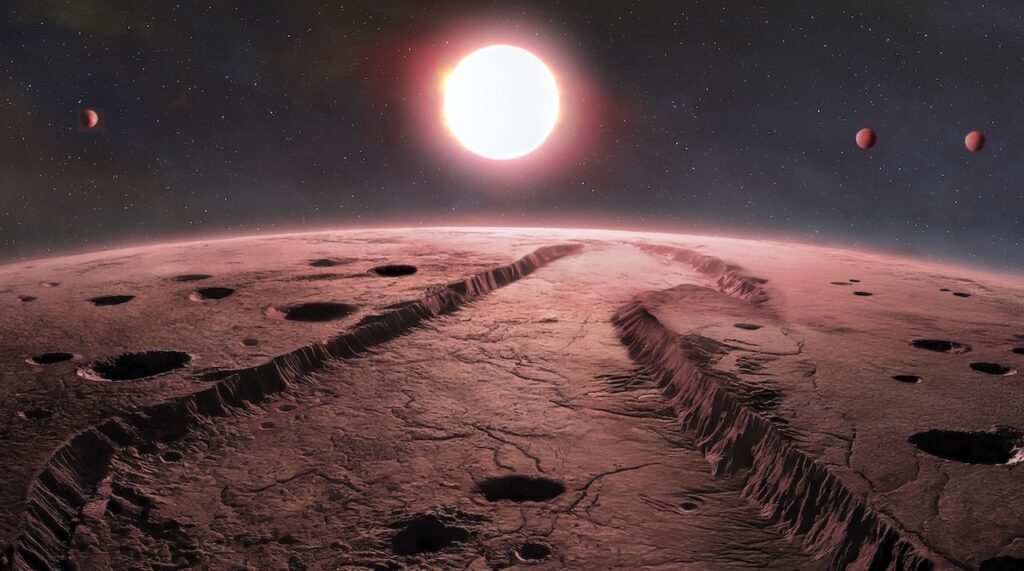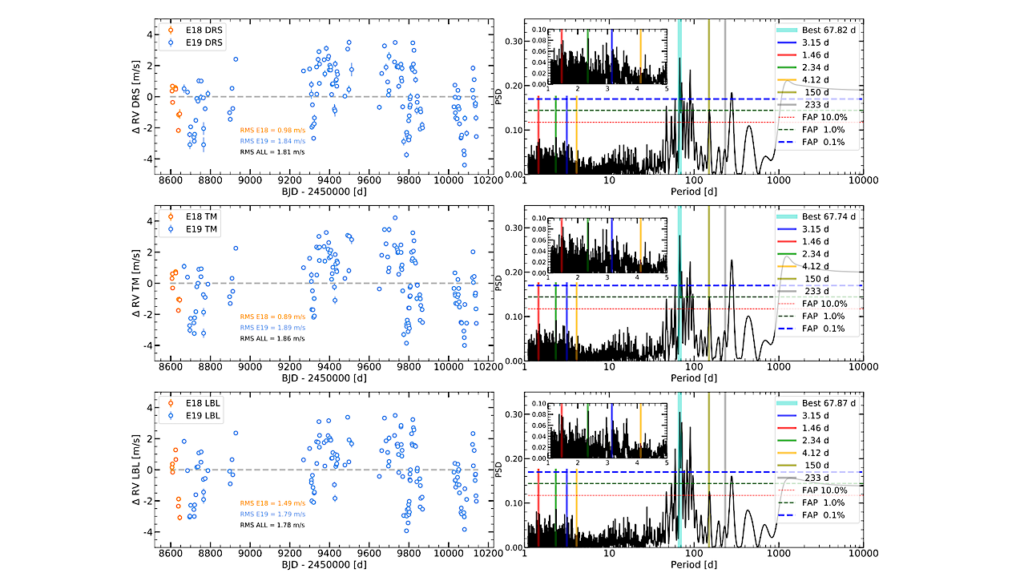A Super-Earth Planet Candidate Orbiting at the Snow-line of Barnard's Star

At a distance of 1.8 parsecs, Barnard’s star (Gl 699) is a red dwarf with the largest apparent motion of any known stellar object.
It is the closest single star to the Sun, second only to the alpha Centauri triple stellar system. Barnard’s star is also among the least magnetically active red dwarfs known and has an estimated age older than our Solar System. Its properties have made it a prime target for planet searches employing techniques such as radial velocity, astrometry, and direct imaging, all with different sensitivity limits but ultimately leading to disproved or null results. Here we report that the combination of numerous measurements from high-precision radial velocity instruments reveals the presence of a low-amplitude but significant periodic signal at 233 days. Independent photometric and spectroscopic monitoring, as well as the analysis of instrumental systematic effects, show that this signal is best explained as arising from a planetary companion.
The candidate planet around Barnard’s star is a cold super-Earth with a minimum mass of 3.2 Earth masses orbiting near its snow-line. The combination of all radial velocity datasets spanning 20 years additionally reveals a long-term modulation that could arise from a magnetic activity cycle or from a more distant planetary object. Because of its proximity to the Sun, the proposed planet has a maximum angular separation of 220 milli-arcseconds from Barnard’s star, making it an excellent target for complementary direct imaging and astrometric observations.
I. Ribas, M. Tuomi, A. Reiners, R. P. Butler, J. C. Morales, M. Perger, S. Dreizler, C. Rodríguez-López, J. I. González Hernández, A. Rosich, F. Feng, T. Trifonov, S. S. Vogt, J. A. Caballero, A. Hatzes, E. Herrero, S. V. Jeffers, M. Lafarga, F. Murgas, R. P. Nelson, E. Rodríguez, J. B. P. Strachan, L. Tal-Or, J. Teske, B. Toledo-Padrón, M. Zechmeister, A. Quirrenbach, P. J. Amado, M. Azzaro, V. J. S. Béjar, J. R. Barnes, Z. M. Berdiñas, J. Burt, G. Coleman, M. Cortés-Contreras, J. Crane, S. G. Engle, E. F. Guinan, C. A. Haswell, Th. Henning, B. Holden, J. Jenkins, H. R. A. Jones, A. Kaminski, M. Kiraga, M. Kürster, M. H. Lee, M. J. López-González, D. Montes, J. Morin, A. Ofir, E. Pallé, R. Rebolo, S. Reffert, A. Schweitzer, W. Seifert, S. A. Shectman, D. Staab, R. A. Street, A. Suárez Mascareño, Y. Tsapras, S. X. Wang, G. Anglada-Escudé
(Submitted on 14 Nov 2018)
Comments: 38 pages, 7 figures, 4 tables, author’s version of published paper in Nature journal
Subjects: Earth and Planetary Astrophysics (astro-ph.EP); Solar and Stellar Astrophysics (astro-ph.SR)
DOI: 10.1038/s41586-018-0677-y
Cite as: arXiv:1811.05955 [astro-ph.EP] (or arXiv:1811.05955v1 [astro-ph.EP] for this version)
Submission history
From: Ignasi Ribas
[v1] Wed, 14 Nov 2018 18:42:27 UTC (3,060 KB)
https://arxiv.org/abs/1811.05955
Astrobiology








